Ferguson protests: What we know about Michael Brown's last minutes
- Published
What happened in the encounter between Officer Darren Wilson and Michael Brown? Here is a look at what is known and what remains to be discovered.
Three minutes - that is how long it took from the time Officer Darren Wilson confronted teenager Michael Brown at 12:01, and 12:04 when other officers arrived on the scene to find Brown dead.
Those three minutes, and the fallout that followed, have been the source of protests, headlines and general unrest in the St Louis suburb of Ferguson, Missouri. But what exactly happened in that time is still a source of confusion.
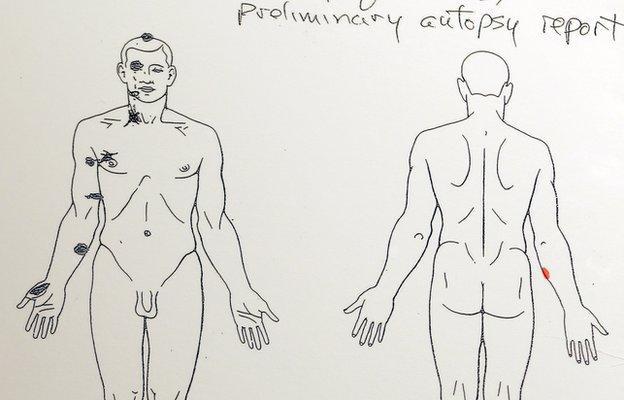
A preliminary autopsy report shows where bullets hit the front of Michael Brown's body
How many times was Michael Brown shot?
According to an autopsy conducted at the request of Brown's family, the teenager was shot at least six times, including twice in the head and four times in his right arm.
The autopsy, conducted by private pathologist Dr Baden, also revealed that Brown could have sustained two additional re-entry wounds.
According to Dr Michael Baden, Brown was killed by one of the bullets that struck the top of his head and entered his skull.
Details leaked from the official county autopsy published in the St Louis Post-Dispatch, external in October also reported that Brown had been shot six times.
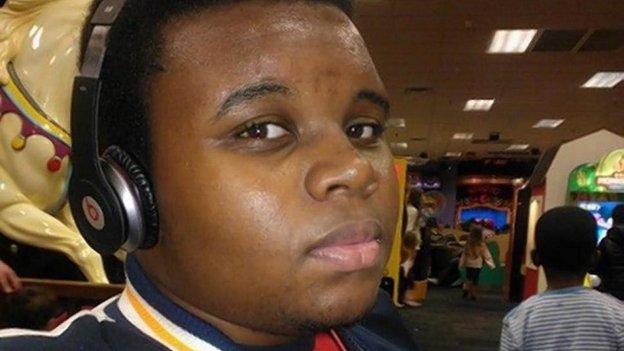
Michael Brown had recently graduated from high school.
Do the autopsies show who was at fault?
The private autopsy commissioned by Brown's family and the leaked official county autopsy report appear to give different accounts of what happened.
Forensic pathologist Shawn Parcells, who assisted Dr Baden in the family's autopsy, said that one of the gunshot wounds to Brown's arm could have occurred as he had his hands up, but it remains unclear if that was the case.
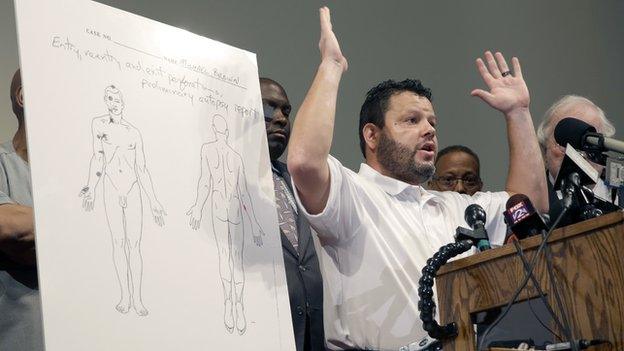
Forensic pathologist Shawn Parcells demonstrates how Michael Brown might have been standing
This particular arm wound could have been sustained while Brown had his back to the officer or while he was facing the officer with his arms in a defensive position.
Dr Baden said that there was no gunshot powder residue on Brown's skin, indicating that he was shot from more than 2ft (.6m) away, although the exact distance between Brown and Mr Wilson at the time of the shooting remains unknown.
But the official county autopsy report appears to contradict this.
The report said Mr Brown had residue "consistent with products that are discharged from the barrel of a firearm" on his thumb, indicating he had been shot in the hand at close range.
This could support Mr Wilson's account of a struggle in the patrol car during which Mr Brown reached for his weapon before he was shot and killed.
How does this compare with witness statements?
Dorian Johnson, Mr Brown's friend who was with him during the shooting, said that the confrontation began as a scuffle at the police car window with Mr Wilson still seated inside. Mr Wilson fired his weapon out the window of the vehicle, said Mr Johnson, and the two teenagers took off running down the street.
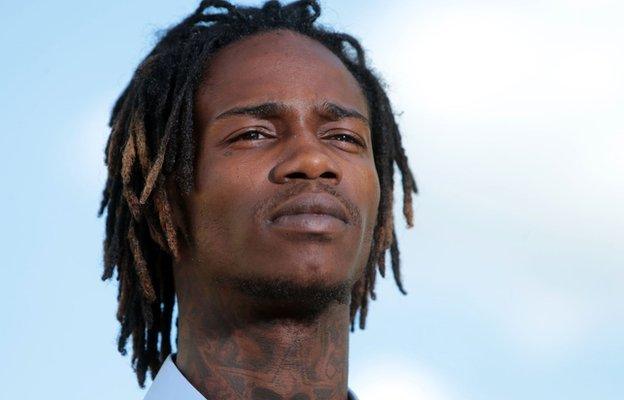
Dorian Johnson was walking with Michael Brown in the street when Officer Wilson stopped them
While Mr Brown was running away from Mr Wilson, Mr Johnson says that his friend was shot once from behind and then turned to face the police officer while raising his arms in the air. According to Mr Johnson, the officer fired several more shots at Mr Brown before he fell to the ground.
Tiffany Mitchell, another eyewitness, recalled a similar narrative in an interview on CNN, external. She said that Mr Brown briefly struggled with Mr Wilson while he was still seated in the police car.
During the struggle, Ms Mitchell says that the officer shot his gun through the window. Following the first gunshot, Mr Brown ran down the street, and the officer got out of his vehicle and shot again, alleges Ms Mitchell.
But the Washington Post, external has reported that a number of unnamed black witnesses have provided testimony to the St Louis county grand jury supporting Mr Wilson's account of events.
The newspaper said seven or eight African American eyewitnesses have provided testimony consistent with Mr Wilson's account, but none have spoken publicly out of fear for their safety.
Family lawyer Benjamin Crump said autopsy results backed up the witness accounts
What have the authorities said so far?
The day after the shooting, St Louis County Police Chief Jon Belmar told reporters, external that Mr Brown or Mr Johnson allegedly pushed Officer Wilson back into his car as he was trying to get out, and proceeded to physically assault the officer. At some point, they struggled over Mr Wilson's weapon. A shot was fired in the car, at which point the officer got out of vehicle, and shot Mr Brown.
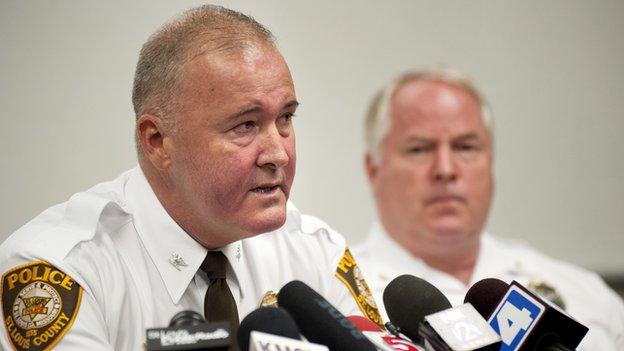
St Louis County Police chief Jon Belmar (left) with Ferguson Police Chief Thomas Jackson
There have been a number of unofficial statements detailing Mr Wilson's version of events in the media, including the description given to a local radio station by a woman who identified herself as "Josie".
According to Josie, when Mr Wilson tried to get out of his car, Brown pushed him back in, and punched him in the face. Mr Wilson reached for his gun, but Brown grabbed it. When Mr Wilson pushed Brown away, the gun went off inside the car.
Josie said Brown then ran off and taunted Mr Wilson when he told the teenager to freeze. Brown then rushed at the officer at full speed, which is when he was shot dead.
CNN, external has reported that Josie's account matches with the account given by Mr Wilson to the St Louis grand jury.
What next?
The St Louis grand jury decided on 24 November not to charge Officer Wilson over the killing after examining evidence from the shooting and hearing from 60 witnesses.
A separate investigation is being carried out by the US Justice Department into possible civil rights violations.